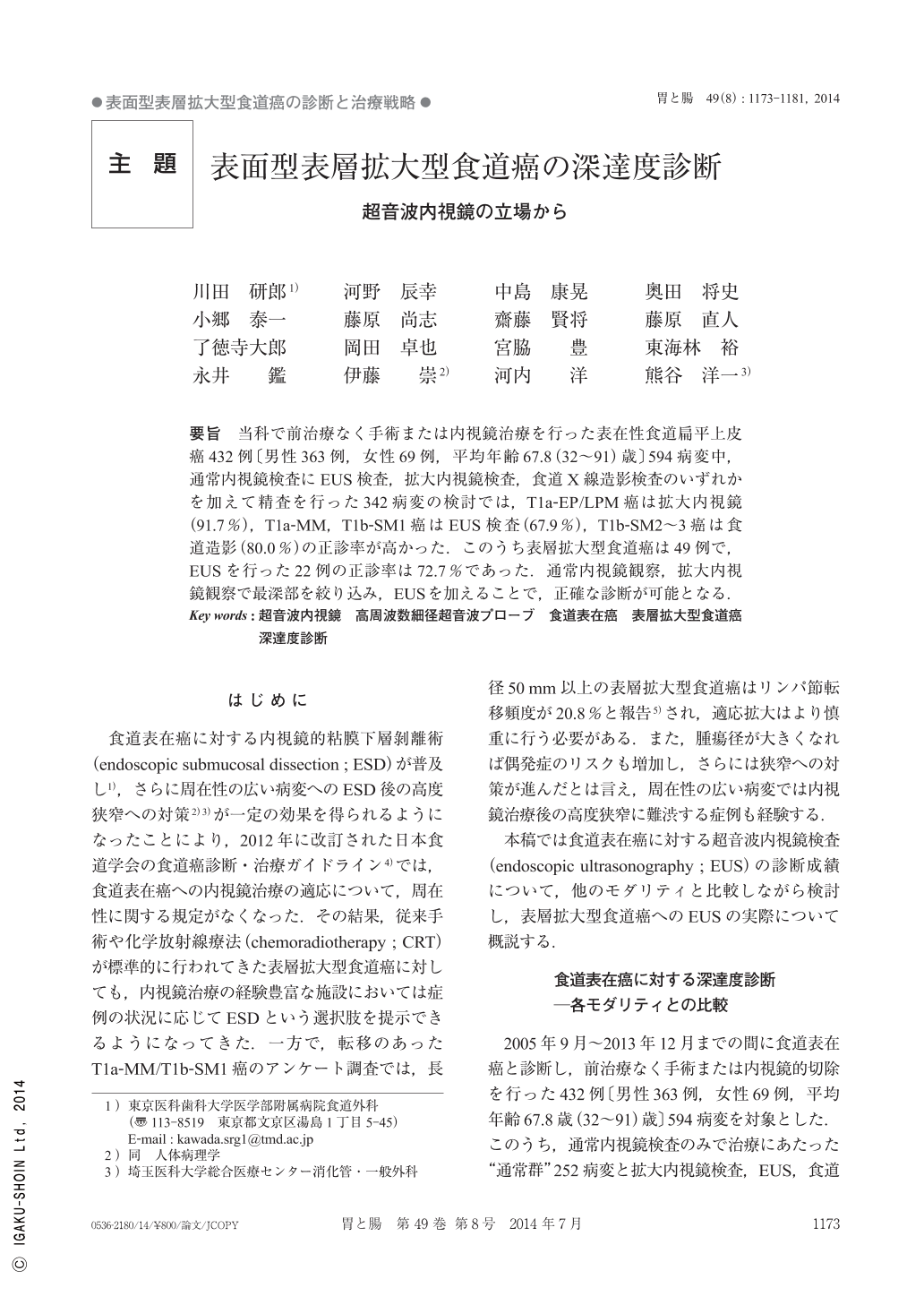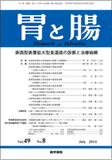Japanese
English
- 有料閲覧
- Abstract 文献概要
- 1ページ目 Look Inside
- 参考文献 Reference
要旨 当科で前治療なく手術または内視鏡治療を行った表在性食道扁平上皮癌432例〔男性363例,女性69例,平均年齢67.8(32~91)歳〕594病変中,通常内視鏡検査にEUS検査,拡大内視鏡検査,食道X線造影検査のいずれかを加えて精査を行った342病変の検討では,T1a-EP/LPM癌は拡大内視鏡(91.7%),T1a-MM,T1b-SM1癌はEUS検査(67.9%),T1b-SM2~3癌は食道造影(80.0%)の正診率が高かった.このうち表層拡大型食道癌は49例で,EUSを行った22例の正診率は72.7%であった.通常内視鏡観察,拡大内視鏡観察で最深部を絞り込み,EUSを加えることで,正確な診断が可能となる.
Between September 2005 and December 2013, we studied 432 patients with 594 lesions(male, 363 ; female, 69 ; mean age, 67.8 years ; range, 32-91 years)of superficial esophageal squamous cell carcinoma who were treated by surgical resection or endoscopic resection without being previously administered therapy at our hospital. Among these lesions, 342 were examined using conventional endoscopy with additional modalities, including EUS(endoscopic ultrasonography), magnifying endoscopy, and/or esophagography. We compared the accuracy of diagnosis of the depth of invasion and found that the accuracy of magnifying endoscopy was the highest(91.7%)for T1a-EP/LPM lesions, the accuracy of EUS was the highest(67.9%)for T1a-MM/T1b-SM1 lesions, and the accuracy of esophagography was the highest(80.0%)for T1b-SM2-SM3 lesions. Among 49 cases of the superficial spreading type of carcinoma, 22 lesions were examined using EUS, with an accuracy of 72.7%. Our results suggest that conventional endoscopy and magnifying endoscopy should be used first for evaluating esophageal squamous cell carcinoma lesions, to measure the deepest point of the lesion, followed by EUS.

Copyright © 2014, Igaku-Shoin Ltd. All rights reserved.


